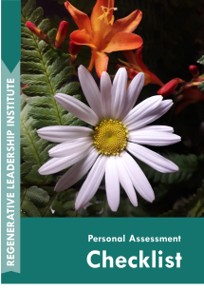A New Approach to Leadership
Embrace Systems Thinking
One of the foundational principles of regenerative leadership is systems thinking. This approach involves understanding and addressing the interconnections within and beyond the organization. By recognizing the intricate web of relationships between various components of the business and its environment, a CEO can make more informed decisions that benefit the entire ecosystem.
Systems thinking encourages leaders to look beyond linear cause-and-effect scenarios and instead view the organization as a dynamic, interrelated whole. This holistic perspective is crucial for identifying opportunities for innovation and resilience in the face of complex challenges.
Foster a Purpose-Driven Culture
Creating a purpose-driven culture is essential for any CEO aiming to lead a regenerative organization. This involves clearly articulating and living by the organization’s purpose beyond profit. A well-defined purpose provides a guiding star for all decisions and actions, ensuring that every aspect of the business aligns with its core values.
By fostering a culture where the organization’s mission is deeply embedded in its operations and strategies, leaders can inspire employees, attract loyal customers, and build stronger relationships with stakeholders. This purpose-driven approach not only enhances organizational coherence but also drives long-term success and fulfilment for all involved.
Promote Diversity and Inclusion
Diversity and inclusion are critical components of regenerative leadership. A diverse and inclusive workplace cultivates an environment where all voices are heard, respected, and valued.
This not only fosters innovation and creativity but also ensures that the organization is better equipped to address the needs and perspectives of a global and diverse market.
CEOs can promote diversity and inclusion by implementing policies and practices that support equal opportunities, actively seeking diverse talent, and creating a culture of belonging.
By embracing diversity in all its forms, leaders can build more resilient and adaptive organizations that thrive in today’s interconnected world.
Implement Sustainable Practices
Sustainability is at the heart of regenerative leadership. CEOs can implement sustainable practices by reducing waste, conserving resources, and adopting renewable energy.
This involves rethinking traditional business models and processes to minimize environmental impact and promote resource efficiency. By integrating sustainable practices into every aspect of the organization, leaders can reduce operational costs, enhance brand reputation, and contribute to a healthier planet.
Sustainable practices also align with the growing consumer demand for environmentally responsible products and services, providing a competitive edge in the marketplace.
Click on the image below to download our Regenerative Leadership Personal Assessment to discover your readiness for regenerative Leadership practice...
Engage in Continuous Learning
The journey towards regenerative leadership is an ongoing process that requires continuous learning and adaptation. CEOs must stay informed about the latest regenerative practices and ongoing education to remain at the forefront of this transformative movement.
Engaging in continuous learning helps leaders keep abreast of emerging trends, technologies, and best practices that can drive positive change within their organizations. It also fosters a culture of innovation and growth, encouraging employees to continually develop their skills and knowledge.
By prioritizing lifelong learning, CEOs can ensure that their organizations are agile, forward-thinking, and well-equipped to navigate the complexities of the modern business landscape.









